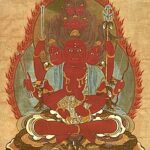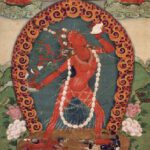The Dalai Lama is one of the most recognized figures in the world of Buddhism and spirituality. He is not just a religious leader but also a symbol of peace and compassion. The title “Dalai Lama” translates to “Ocean of Wisdom” in Mongolian, which reflects the profound understanding and insight associated with this position. The Dalai Lama is considered the spiritual leader of the Tibetan people, and his teachings have transcended borders, resonating with people from various cultures and backgrounds. His life and work embody the principles of compassion, mindfulness, and non-violence, making him a prominent figure in discussions about peace and humanitarian efforts.
The Historical Background of the Dalai Lama
The lineage of the Dalai Lama dates back to the 14th century. The first Dalai Lama, Gedun Drupa, was recognized as an incarnation of the bodhisattva Avalokiteshvara, the embodiment of compassion. This historical connection to Avalokiteshvara is crucial, as it establishes the Dalai Lama’s role as a spiritual leader dedicated to alleviating the suffering of others. The second Dalai Lama, Gedun Gyatso, further developed the political and spiritual foundations of the office, laying the groundwork for the future Dalai Lamas. Over the centuries, the Dalai Lama has played a significant role in Tibetan politics and culture, becoming a central figure in Tibetan identity.
In the 17th century, the fifth Dalai Lama, Ngawang Lobsang Gyatso, unified Tibet and established it as a theocratic state. This period marked the consolidation of the Dalai Lama’s power and the integration of religious and political authority. The fifth Dalai Lama’s reign was characterized by a flourishing of culture and the arts, as well as the construction of the Potala Palace, which became the traditional winter residence of the Dalai Lamas. The Potala Palace remains a symbol of Tibetan Buddhism and an architectural marvel, attracting visitors from around the world.
The Role of the Dalai Lama in Tibetan Buddhism
The Dalai Lama is considered the highest spiritual authority in Tibetan Buddhism, specifically within the Gelug school, which is one of the four major schools of Tibetan Buddhism. As a spiritual leader, the Dalai Lama provides teachings and guidance to his followers, emphasizing the importance of compassion, mindfulness, and the pursuit of enlightenment. His teachings often draw from ancient Buddhist texts, as well as his personal experiences and insights. The Dalai Lama encourages practitioners to cultivate inner peace and to develop a genuine concern for the well-being of others.
 Shoten
ShotenOne of the core tenets of the Dalai Lama’s teachings is the practice of loving-kindness, or “metta,” which involves extending goodwill and compassion to all living beings. This practice is not limited to friends and family but extends to everyone, including those who may have caused harm. The Dalai Lama believes that by cultivating loving-kindness, individuals can transform their own hearts and minds, contributing to a more peaceful world. This approach aligns with the broader Buddhist principle of non-violence and the interconnectedness of all life.
Key Teachings of the Dalai Lama
- Compassion: The Dalai Lama teaches that compassion is the foundation of a fulfilling life.
- Mindfulness: Practicing mindfulness helps individuals stay present and aware.
- Interconnectedness: Understanding that all beings are interconnected fosters empathy.
- Forgiveness: Letting go of anger and resentment leads to inner peace.
Another significant aspect of the Dalai Lama’s teachings is the concept of impermanence. He emphasizes that all things are transient and that attachment to material possessions and even relationships can lead to suffering. By understanding the nature of impermanence, individuals can learn to appreciate the present moment and cultivate a sense of detachment that allows for greater peace and happiness. This teaching encourages followers to let go of clinging to the past or worrying about the future, fostering a more balanced and serene approach to life.
The Dalai Lama’s Exile and Global Influence
In 1959, following the Chinese invasion of Tibet, the 14th Dalai Lama, Tenzin Gyatso, fled to India, where he established a government-in-exile. This period marked a significant turning point in his life and the history of Tibet. The Dalai Lama became an international symbol of the struggle for Tibetan autonomy and the preservation of Tibetan culture. His commitment to non-violence and dialogue has garnered him respect and admiration worldwide. He has traveled extensively, sharing his message of peace and compassion, and advocating for the rights of the Tibetan people.
 Kobo Daishi
Kobo DaishiDespite being in exile, the Dalai Lama has worked tirelessly to promote a peaceful resolution to the Tibetan issue. He has engaged in numerous dialogues with Chinese officials, emphasizing the need for understanding and mutual respect. His approach is rooted in the belief that genuine dialogue can lead to solutions that benefit both Tibetans and the Chinese government. The Dalai Lama’s ability to maintain a stance of compassion, even in the face of adversity, has inspired countless individuals and movements for peace and justice around the globe.
Global Initiatives and Humanitarian Efforts
- Environmental Awareness: The Dalai Lama advocates for the protection of the environment and sustainability.
- Interfaith Dialogue: He promotes understanding and cooperation among different religions.
- Education: The Dalai Lama emphasizes the importance of education in fostering compassion.
- Health and Well-being: He encourages practices that promote mental and physical health.
The Dalai Lama’s influence extends beyond religious teachings. He has engaged with world leaders, scientists, and activists, promoting a vision of global harmony and understanding. His initiatives often focus on the intersection of spirituality and science, particularly in areas such as mindfulness and mental health. He has collaborated with neuroscientists to explore the benefits of meditation and mindfulness practices, contributing to a growing body of research that supports the positive impact of these practices on mental well-being.
The Dalai Lama’s Philosophy of Happiness
The Dalai Lama has often spoken about the importance of happiness as a fundamental human goal. He believes that happiness is not merely the absence of suffering but a deep sense of fulfillment that comes from within. According to the Dalai Lama, true happiness is cultivated through inner peace, compassion, and the ability to connect with others. He encourages individuals to seek happiness through altruism and acts of kindness, emphasizing that the more we contribute to the happiness of others, the more we experience joy ourselves.
One of the key aspects of the Dalai Lama’s philosophy is the idea that happiness is a skill that can be developed. He advocates for practices that promote positive emotions and resilience, such as gratitude, forgiveness, and loving-kindness meditation. By actively engaging in these practices, individuals can train their minds to respond more positively to life’s challenges. The Dalai Lama often reminds us that while external circumstances may influence our happiness, the true source lies within our own minds and hearts.
Practical Steps to Cultivate Happiness
- Practice gratitude: Regularly reflect on the things you are thankful for.
- Engage in kindness: Perform acts of kindness for others, no matter how small.
- Develop a meditation practice: Dedicate time to mindfulness and meditation.
- Foster connections: Build and maintain meaningful relationships with others.
The Dalai Lama also emphasizes the importance of mental health in the pursuit of happiness. He encourages individuals to seek help when needed and to prioritize self-care. By addressing mental health issues and fostering a supportive environment, individuals can create a foundation for lasting happiness. The Dalai Lama’s teachings on happiness resonate with many, as they offer practical guidance for navigating the complexities of modern life while maintaining a sense of joy and fulfillment.
The Dalai Lama’s Legacy and Future
The legacy of the Dalai Lama is vast and profound. His teachings have inspired millions around the world to embrace compassion, mindfulness, and the pursuit of peace. As the 14th Dalai Lama ages, discussions about the future of the Dalai Lama lineage and the future of Tibetan Buddhism have become increasingly relevant. There are ongoing debates about how the next Dalai Lama will be recognized and what the implications of this will be for Tibetans and the global Buddhist community.
The Dalai Lama has expressed the possibility of not being reincarnated, suggesting that if the institution of the Dalai Lama is no longer beneficial, it may be better to end the lineage. This perspective reflects his deep understanding of impermanence and the need to adapt to changing circumstances. Regardless of what the future holds, the teachings and values he has imparted will continue to resonate and guide individuals seeking a path of compassion and understanding.
Continuing the Teachings of the Dalai Lama
- Spread compassion: Encourage acts of kindness in your community.
- Practice mindfulness: Incorporate mindfulness into your daily routine.
- Engage in dialogue: Foster conversations about peace and understanding.
- Support Tibetan culture: Advocate for the preservation of Tibetan heritage.
The teachings of the Dalai Lama will undoubtedly continue to influence future generations. As individuals and communities embrace his message of compassion and interconnectedness, the world may move closer to a more peaceful and harmonious existence. The Dalai Lama’s life and work serve as a reminder that each person has the potential to make a positive impact, and that through understanding and kindness, we can contribute to the greater good of humanity.

